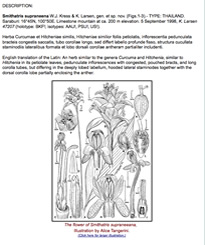NYBG Science in the News: Plain English and the Tree of Life
Posted in NYBG in the News, Science on January 30 2012, by Ann Rafalko
The turn of the year from 2011 to 2012 was an exciting time for the scientists who work, teach, and research at The New York Botanical Garden.

In December, scientists at the Botanical Garden, the American Museum of Natural History (AMNH), New York University, and Cold Spring Harbor Laboratory announced that they had created the largest genome-based tree of life for seed plants to date. In January, James S. Miller, Ph.D., Dean and Vice President for Science at the Garden, explained important changes in the requirements for the naming of newly discovered plants beginning in 2012. Earlier in 2011, Dr. Miller had been the lead author on an article in the online journal PhytoKeys summarizing the changes. To say that these scientific advancements are huge is a gross understatement, but how to understand them?
Let’s use plain English, which is exactly what the new plant-naming requirements do. As outlined in an op-ed published in the New York Times on January 22, Dr. Miller, who took part in the International Botanical Congress in Melbourne, Australia, where the changes were approved, explains that plants will still be named in Latin, but that they will no longer have to be described in Latin. This laborious process–which has been on the botanical books since 1908–is only the first hurdle each botanist must clear before he may name a new plant species. The next step, the publishing of this description in a printed, paper-based journal, has also been done away with by the International Code of Botanical Nomenclature in an effort to speed the naming of plants. Why the hurry? As Dr. Miller says, “as many as one-third of all plant species (may be) at risk of extinction in the next 50 years.” One way to save a plant is to name a plant. From there, scientists–freed from the strictures of Latin–may further investigate the plant and all of its potentialities.
